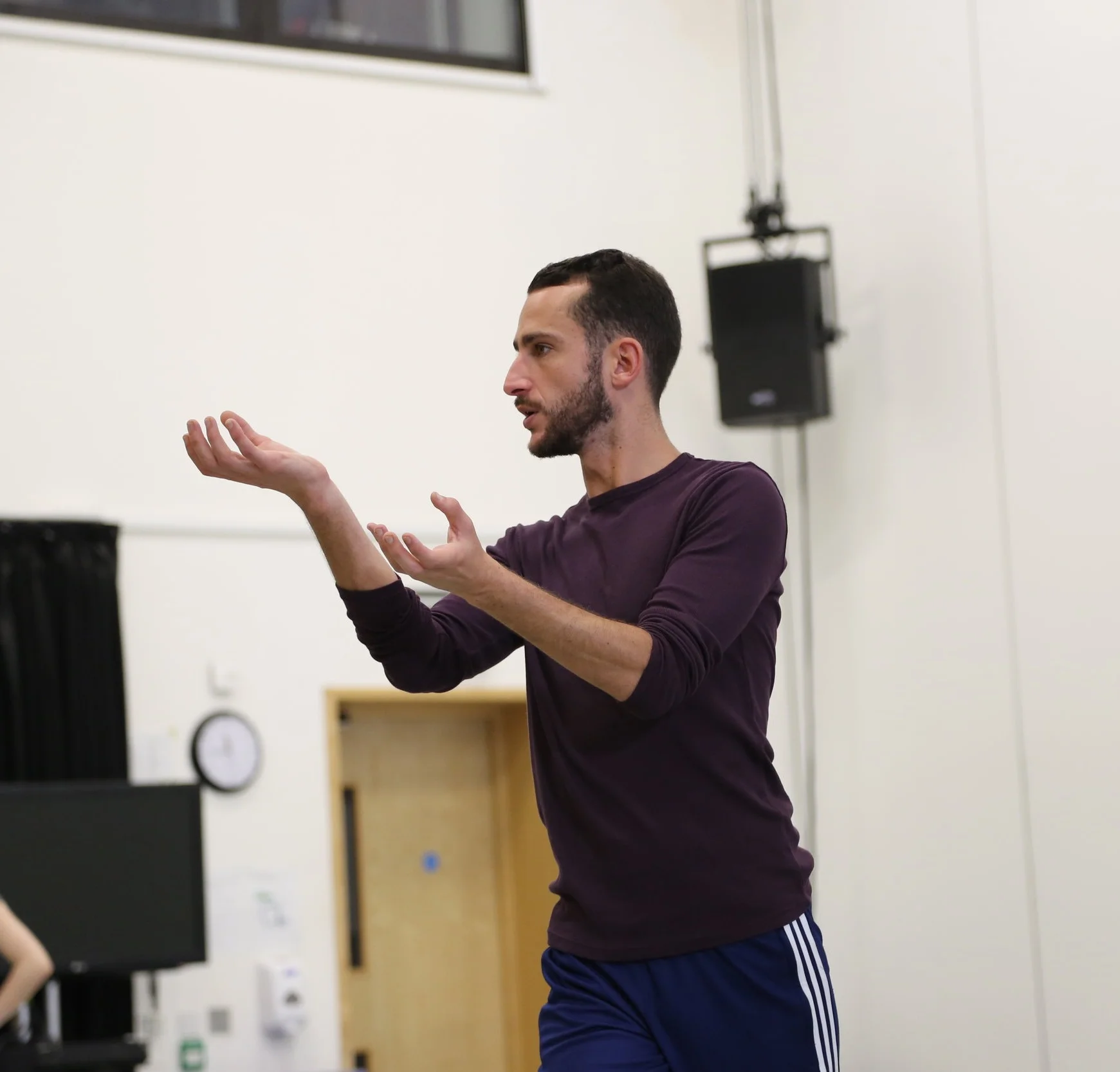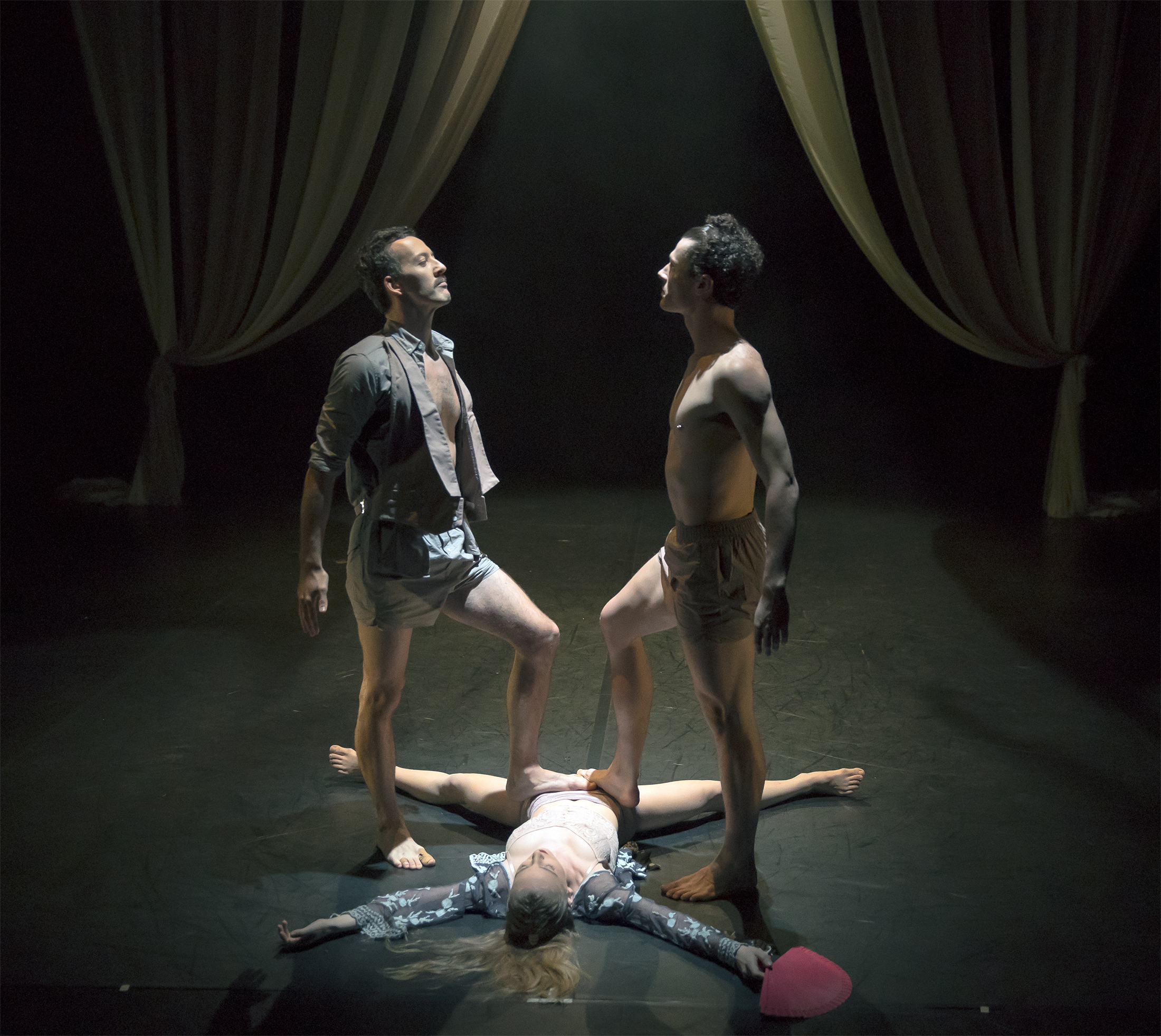Beauty and the Beast: but not as you know It
Carlos Pons Guerra’s contemporary dance company De Nada Dance Theatre return to The Lowry with a modern take on the classic Beauty and the Beast on Sun 1 April. Toro: Beauty and the Bull is set in a circus sideshow of dystopian Hispanic airs, in a heady world of matadors, monsters in drag, female bulls and ladies of the night.
In this interview, Carlos talks to us about starting a dance company from scratch, creating dance with a unique Hispanic identity and gender’s role in storytelling.
De Nada Dance Theatre was set up in 2012, tell us about the journey the company has been on since then?
When we started the company, back in 2012, we were two dancers, a table, two chairs and a leg of Spanish ham, all crammed into an old Mercedes on a rickety drive to London from Leeds, to perform our first work, Young Man!, at The Place. Six years later, with TORO, we are touring the UK with six dancers, beautiful set and costume by Ryan Dawson Laight, and we don’t always travel crammed in with the props. It has been an incredible six years, where we’ve been extremely fortunate to receive support from some incredible organisations, including Spin Arts, Arts Council England, Northern School of Contemporary Dance, Yorkshire Dance, DanceXchange, British Council, Homotopia, Instituto Cervantes and the Spanish Embassy in London, and have been invited to perform in beautiful theatres across the UK, Europe, and recently, the Caribbean- although The Lowry is definitely at the top of our list for amazing and welcoming venues.
We set up DeNada through a desire to explore, question and share our Hispanic and Latino identities in the UK and beyond, as well as with strong intentions of creating work that tackled about sexual, gender and cultural equality. I feel very lucky to have had the chance to share our stories, culture and views with so many people so far. Being an independent company- and a young one at that! – is difficult, and both me as choreographers and our dancers have had to wear many hats when creating work and when on the road- my bedroom has often become an improvised wardrobe department for costume laundry, for instance! But we’ve always loved the work we do, we really enjoy engaging with the narratives we create and above all, communicating them with an audience, so that has got us through some tricky times. Above all, the DeNada family- dancers and team- are a real gift, and without their support I don’t think these last six years would have been possible.
Photo: Emma Kauldhar
‘TORO: Beauty and the Bull’ is a dance adaption of Beauty and the Beast. How does your version differ to the Disney version we all know?
It is very different- although answering your question, I’m thinking we may need some dancing silverware somewhere in the production! TORO is definitely an adult reading of the fairy tale, with strong Hispanic and Latino aesthetics. I feel that the original Beauty and the Beast is a story that deals with overcoming your inner demon- it is about repentance: an evil man is cursed and turned into a monster until he discovers love and mends his ways. TORO is more concerned with what what we externally perceive as beastly; how the definition of monstrous is mutable, but tends to be defined by the same people- white superior men. We’re looking at how, throughout history, we have deemed anyone other as monsters: be they women, colonized peoples, different ethnic groups or the LGBTQ community, for instance. Our protagonist is a transgender, South American native minotaur- half bull, half human female- and is the character that shows the most compassion, love and acceptance, yet is considered a beast by a group of monstrous humans. In our version, there is no curse, no repentance. We question who the real monsters amongst us are, at a political and societal time when some pretty nightmarish figures seem to be emerging everywhere.
Photo: Emma Kauldhar
Another main difference is that, although TORO also has a love story at its heart- in this case, it happens between two women: a young prostitute and the half-female bull that rescues her from a gang of swinish conquistadors. I was excited about the idea of introducing same-sex couples into the fairy tale canon. Our plot also differs massively: instead of to a Gothic castle, our beauty is taken to a circus sideshow in the South American desert, where the bull lives with her troupe of dancing dragimals- animals in drag. And once there, she isn’t forced to clean or is trapped in a dungeon- instead, she is accepted into the gender-fluid, caring, accepting and intimate community of the monsters. Unfortunately, the menace of the superior macho never quite wanes.
So, as you can see, we present quite a bizarre and dramatic reading of the fairy tale. We may be missing a singing teacup, but please come into our exciting sideshow- in fact, be our guest!
As a UK based company with a unique Hispanic identity, will we see hints of that in the performance?
Absolutely! The work I create for DeNada- and inevitably, most of my work- has a strong cultural element, as I always stem from a personal place, and I am, well, kind of Hispanic.
Photo: Emma Kauldhar
I think the main thing is a heightened sense of drama, which to me is very idiosyncratic with the Hispanic and Latin character. The choreography itself takes inspiration from Hispanic dance forms, such as the pasodoble, the mariachi, the cumbia- as well as from bull fights, Easter processions and more. We have an eclectic soundtrack of Latin music, including boleros, bull fight marches, Mexican ballads, songs by female icons such as Sara Montiel, Chavela Vargas and La Lupe, and even classical pieces by Spanish or Latin American composers, such as Isaac Albeniz and Silvestre Revueltas.
Thematically, the piece is set in a dystopian South America, and deals with the colonial history between Spain and South America, which is quite a dark history. My first source of inspiration for the work was British novelist Angela Carter’s feminist reading of fairy tales, but from there, many Hispanic artists have influenced the work: the magic realism of authors such as Luis Borges and Gabriel Garcia Marquez, the films of Pedro Almodovar and Alejandro Jodorowsky, and more.
De Nada Dance Theatre are known for their contemporary style – but what else can audiences expect from the movement on stage?
Although we are a dance company, and TORO is a very physical and energetic work, audiences can expect a strong sense of theatricality. Our main focus is to tell stories; we do that through dance, but drama and narrative are at the fore of TORO. So people who are not very familiar with dance will be able to understand and follow our story easily, almost as if they were watching a film. And that will hopefully invite everyone to reflect on the themes we present.
The work we create fits within the contemporary dance genre, but as a choreographer, I really believe that you have to use whatever language you need to tell your story, even if that falls outside of the definition of a particular style. It’s almost like speaking through multilingual dance. So in TORO, the dance is built out of contemporary vocabularies, as well as from classical ballet, Latin/Hispanic dance forms, and, one of the forms that inspired us the most: voguing and drag culture, which are from where we based the language for the bull and her troupe of dragimals.
The show deals with current debates on gender equality, colonisation and immigration. How have you used dance as a genre to give your voice to debate?
I’ve always felt that dance can tell a more honest truth than any other art form. As humans, the first way we learn to communicate is through our bodies, before words- so for me, telling a story through movement is the most sincere, effective and pure way of dealing with a subject.
For TORO, we have developed physical images that I hope transmit these themes. When we speak of colonization, for instance, in this work we draw a parallelism between colonizing land and colonizing bodies, so our conquistadors try to invade and conquer the body of the beauty, who represents land.
Photo: Emma Kauldhar
Physical characterization is also how we approached this. When developing the characters’ language, we worked on creating a language that was absurd, grotesque and a hyperbole of John Wayne for the men that harass the beauty and the bull. For the dragimals, who represent the other- colonized people, women, the queer community- and who are costumed as beautiful monsters, we have created a vocabulary that contrasted with the men, by being quirky, yet elegant and poised. In fact, much of the inspiration for the dragimals’ movement came from the 80’s voguing culture (Paris is Burning). When watching vogue balls, and hearing about that generation’s experience, with homophobia and societal prejudice, I really thought about those beautiful men and women who had been ostracized and who were expressing their dreams and identities through such a unique and stunning form of dance. There was something guttural in voguing and drag- something that’s primitive and beautiful, which was probably deemed monstrous and freakish by many until it was adopted in popular culture.
Lastly, I think casting is also key to this: the company for TORO is formed by two females and four males. In some of the scenes I really wanted to portray an asphyxiating and menacing aspect to masculinity, and the gender contrast achieves this.




